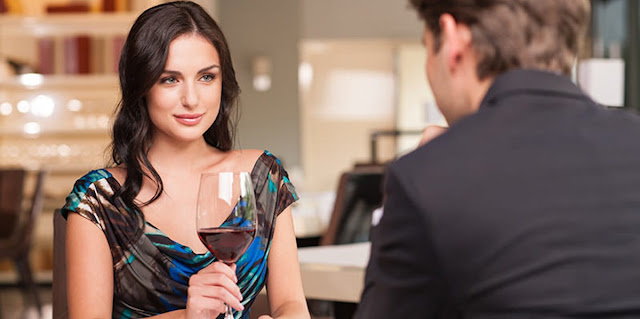The waiter approaches, dapper in black and white, and leans in to break your flowing repartee. “Would you like to see the wine menu, sir?” he asks politely. You nod assuredly, of course you do – you are so in control right now.
Snatching the leather-bound list, you peel back the cover… and suddenly remember you know sweet FA about wine. Alarm bells start ringing, that confidence drains away like water from a titled plate, and your peacock plume falls limp.
This is your moment to be a real, sophisticated gentleman. It’s scientifically proven that, much like changing a flat tyre, a man that can tell his Merlot from his Zinfandel or his Chardonnay from his Moscato – without coming across as flashy arrogance of time spent holidaying in Tuscany – becomes infinitely more attractive to the opposite sex*. Start umming and ahhing, though, while muttering something about the complex body of a white Malbec from Iceland, and she’ll think you have the manliness of a manikin.
This is one of life’s important skills for every gentleman to tack. She doesn’t expect you to have the know-how and proclivity to claret of Robert Parker (if you don’t know who he is, you definitely need to keep reading), but it’s an erudite string to your bow that will certainly catch her attention. So, gents, while the complexities of wine choice are as deep as the Pacific Ocean, here is a simple and basic guide to getting it right…
(*fact check needed)

MATCH TO FOOD
Wine is subjective, with different grape varieties and regions appealing to different palates. Therefore, look beyond the pricings – they give an indication of quality, but not a science of preference. Instead, settle on either white or red, have a rough idea of what it is your date and you are going to eat, and plan accordingly to pair the two…
Popular white varieties…
Sauvignon Blanc (crisp, light and fruity with sweet notes) >> Seafood, chicken and salads
Chardonnay (unoaked = fruity and fresh, oaked = more complex with slightly more body – don’t be afraid to ask if it isn’t made clear) >> Fish, chicken and pastas
Pinot Grigio (crisp, dry wines with fruity flavours) >> Fish and chicken
Riesling (light, zippy acidity with aromas of fresh apples) >> Fish, seafood and more exotic/spicy dishes
Popular red varieties…
Cabernet Sauvignon (full-bodied with rich currant qualities and pepper notes) >> Red meat and game
Pinot Noir (delicate and fresh, with fruity aromatics) >> Chicken, fish and lamb
Merlot (typical scents include black cherry, plums and herbal flavours. Slightly lighter than Cabernet Sauvignon) >> Pizza, pasta, charcuterie and grilled chicken
Sangiovese (medium-bodied with fresh berry and plum flavours) >> Good with almost anything – especially Italian food
Zinfandel (zesty flavour with berry and pepper) >> Pasta, pizza, and grilled and barbecued meats

VALUE FOR MONEY
“For great value for money,” explains Georgina Collett of Bibendum PLB, “I recommend stepping away from French wine, as you can be easily disappointed for the price. Chile offers an array of lovely, easy-drinking wine, while Italy offers a variety of quirky, indigenous varietals that are fantastic value. Argentina is also extremely popular at the moment.
“The adage of picking the second least expensive wine on the menu is rarely a great move. The restaurants may know this is a common theme, and could take advantage by marking-up the price. If price is a concern, you are actually better off going for their House wine as this is what a restaurant/bar is judged on.
“For trendy wines of the moment, look out for the whites Picpoul de Pinet or Gavi; and for reds, Malbec or Primitivo (aka Zinfandel).”
Alternatively, you can always ask for a wine that is ‘full-bodied’ or ‘light’ (depending on your food choice). This shows your date that you aren’t totally befuddled by oenology, while allowing the trained waitress/waiter to steer you in the right direction.
TASTING
The waiter will re-appear and show you a bottle. This is to ensure it is the exact wine you ordered.
The bottle will then be opened at the table, and a small amount will be poured into your glass. He isn’t expecting you to delve into the tasting notes worthy of a connoisseur, you are merely checking to see if there is anything patently wrong with the wine – in particular, whether it is corked, in which case it will have a dank, musty, wet cardboard aroma and flavour. In the rare event of this happening, you are fully within your right to ask for the bottle to be substituted.
N.B. Contrary to common belief, the phrase ‘corked’ has nothing to do with the bits of cork floating on the surface – it is a term referring to a wine fault characterised by a set of undesirable smells or tastes found in a bottle.

No comments:
Post a Comment